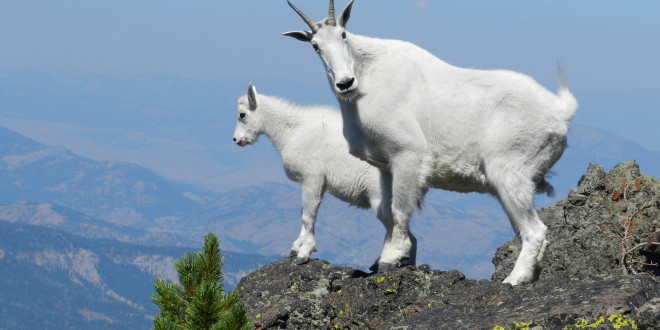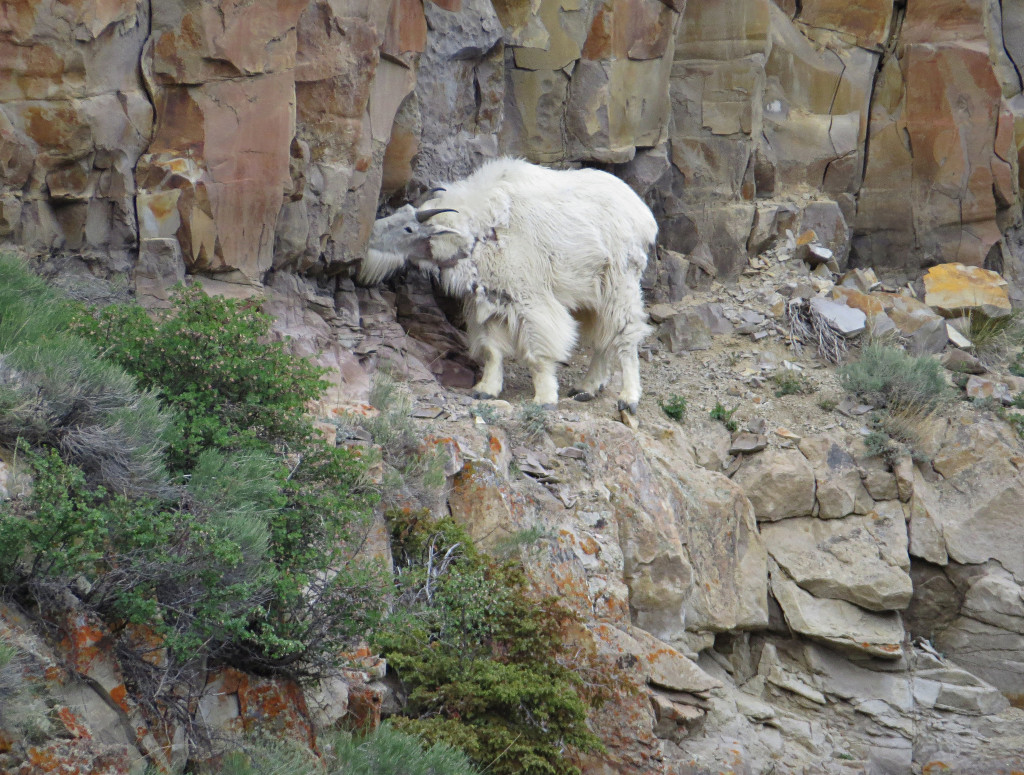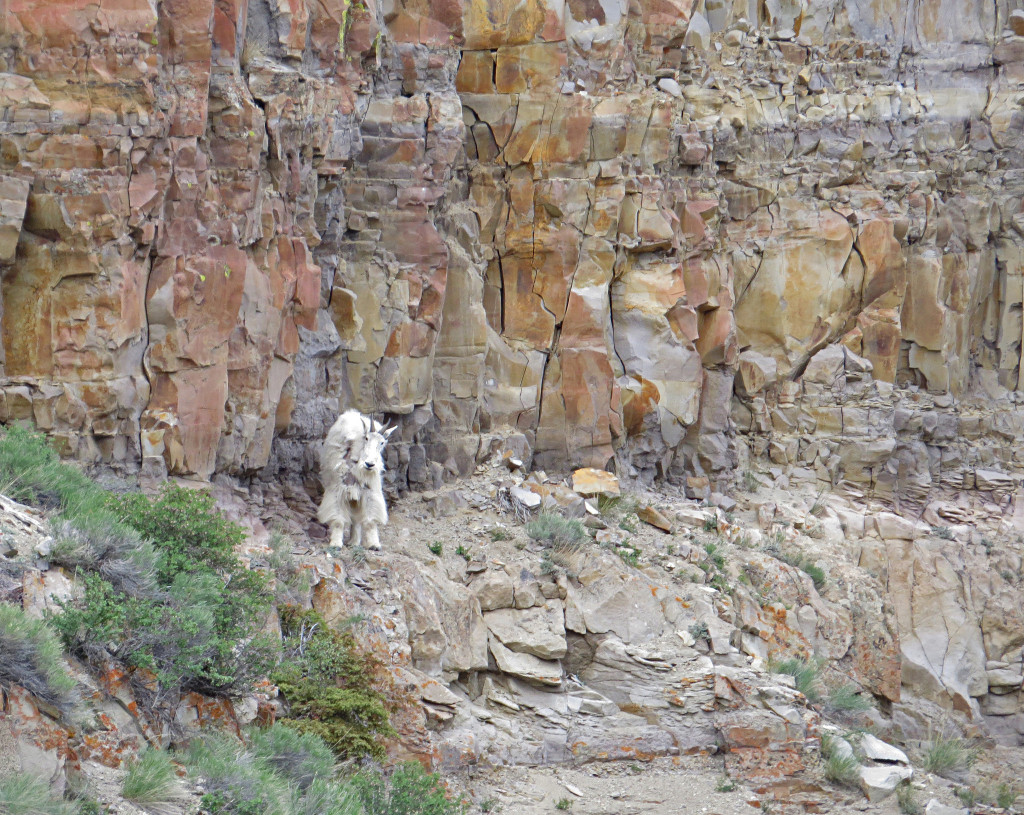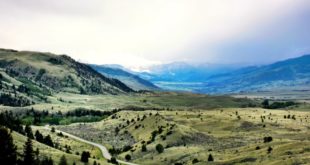On paper, it seems like mountain goats and Yellowstone National Park go hand-in-hand.
After all, Yellowstone has the proper territory for mountain goats; they’re an endemic species in North America, especially around the Rocky Mountains. Although they’re not frequently seen in the Park, they make an indelible impression scampering on the mountainous terrain like ghosts in the distance.
You might be surprised to learn that mountain goats are not native to Yellowstone National Park. Not recently anyhow.
There is evidence, based on paleontological digs, that mountain goats were once native to the Park. The current crop of goats are descended from populations introduced in the Greater Yellowstone Area in the 1940s and 50s.
According to an article cited in Uncommon Ground: Rethinking the Human Place in Nature: the irruption of mountain goats into Yellowstone National Park around the late 80s and early 90s, where they had not been for thousands of years, presented a bit of a conundrum for wildlife managers: what to do with a species that was historically native but not currently native? And what does that mean for extant native species in the area?
There was concern that the goats would essentially swarm the Park, stripping regions bare and displacing native plants and alpine ungulates. Today, there are 208 mountain goats living in and around the Park, mostly in the northern slopes of the Park, especially in the alpine region. And although top vegetation is lower and (apparently) there are more barren patches in Yellowstone’s alpine habitat, mountain goats have not made a substantive impact on the ecological community; they may be increasing soil nitrogen in fact through their urine and feces.
Depending on when you’re in the Park, there are different places you’d expect to see mountain goats. In winter, for instance, they prefer steep south-facing slopes and windblown ridge tops. In summer, they prefer meadows, cliffs, ravines, and forests.
Basic Facts
- Scientific name: Oreamnos americanus
- Not a “true goat” but belongs to the subfamily Caprinae (goat-antelopes).
- Measure two-and-a-half to three feet at the shoulder.
- Males weigh 150-400 pounds.
- Females weigh 125-200 pounds.
- Both males and females possess horns; female horns are longer, thinner, and less curly.
- All mountain goats are bearded.
- Can live up to 18 years in the wild.
Habitat
- Live in alpine habitats i.e. the upper altitudes of mountainous regions.
- Plant life dominated by coniferous trees, wildflowers, mosses, succulents, and lichens.
- Mountain goats have two coats for ultimate winter adaptability; goats shed their overcoat in summer time.
- Goats move highland in summer and retreat to lower altitudes in winter.
Diet
- Mountain goats graze on grasses, sedges, herbs, shrubs, ferns, mosses: even lichens in some circumstances!
- Most of their water needs are fulfilled by grazing.
Behavior
- Mountain goats are active day and night.
- Known to rest under overhanging cliffs.
- Herd animals, although small groups will split off during the summer occasionally in search of salt licks.
- Females (called nannies or does) live in herds with kids.
- Males (called bucks) are either solitary or live in bachelor group of two to three other goats.
- Nannies are fiercely territorial.
Reproduction
- Begin breeding after two-and-a-half years.
- Males show dominance and demonstrate viability as a mate by fighting fellow males with their horns.
- Mate between November and December.
- Kids gestate 150-180 days.
- Typically, one kid is born, though sometimes twins are born to one nanny.
- Kids weigh around six pounds at birth.
- Kids stop drinking milk after three or four months, and generally stay with their mother until her next litter is born.
A Hop, Skip, And A Jump
- One day after birth, kids are able to move around rocky terrain with their mother.
- Mountain goats have special hoof pads to absorb shock; these pads are also slip resistant.
- Hooves described as being rubber-like in terms of flexibility.
- Hind legs are especially strong.
 Yellowstone Insider Your Complete Guide to America's First National Park
Yellowstone Insider Your Complete Guide to America's First National Park








You must be logged in to post a comment.